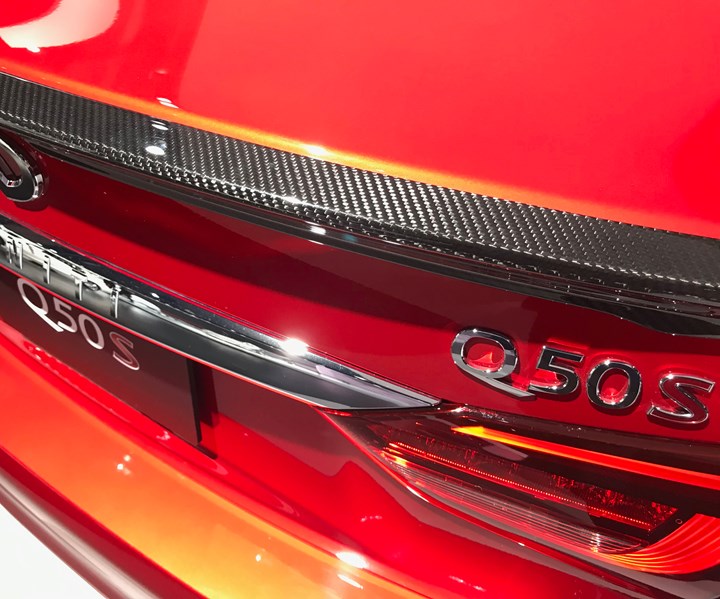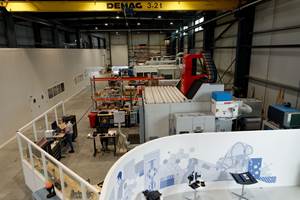U.S. DOT, EPA set new automotive emissions, fuel efficiency standards
Under the new standards, the projected overall industry average required fuel economy in MYs 2021-2026 is 40.4 miles per gallon, compared to 46.7 mpg in MY 2025 under the 2012 standards.

Source | CW
The U.S. Department of Transportation's National Highway Traffic Safety Administration (NHTSA) and the U.S. Environmental Protection Agency (EPA) on March 31 released the final Safer Affordable Fuel-Efficient (SAFE) Vehicles Rule setting U.S. corporate average fuel economy (CAFE) and CO2 emissions standards for model years 2021-2026 passenger cars and light trucks.
The final rule will increase stringency of CAFE and CO2 emissions standards by 1.5% each year through model year 2026, as compared with the standards issued by the Obama Administration in 2012, which would have required about 5% annual increases. This is a change from the proposal issued in 2018. The EPA says the majority of automakers are not meeting the 2012 standard without resorting to the use of credits. The final rule can be found here: https://www.epa.gov/regulations-emissions-vehicles-and-engines/safer-affordable-fuel-efficient-safe-vehicles-final-rule.
NHTSA is required by Federal law to set fuel economy standards at the maximum feasible level for passenger cars and light trucks, for every model year. If NHTSA determines that standards previously set are no longer maximum feasible, NHTSA can amend them. In determining what levels of CAFE standards would be maximum feasible, the law directs NHTSA to consider four specific factors: technological feasibility; economic practicability; the effect of other motor vehicle standards of the government on fuel economy; and the nation's need to conserve energy.
On April 2, 2018, the EPA issued the Mid-Term Evaluation Final Determination that found that the MY 2022-2025 CO2 emissions standards are not appropriate and should be revised. For nearly two years, the agencies worked together to extensively analyze current automotive and fuel technologies, reviewed economic conditions and projections, and consulted with other Federal agency partners to ensure the most reliable and accurate analysis possible. The agencies also evaluated more than 750,000 public comments and held three public meetings.
The EPA says the SAFE Vehicles Rule reflects the realities of today's markets, including substantially lower oil prices than in the original 2012 projection, significant increases in U.S. oil production, and growing consumer demand for larger vehicles.
The EPA says the SAFE Vehicles Rule increases U.S. competitiveness by reducing regulatory costs by as much as $100 billion through model year 2029. According to NHTSA/EPA projections, it will also boost new vehicle sales through model year 2029 by up to 2.7 million vehicles. The EPA says the new rule will reduce the average price of a new vehicle by about $1,000 and thus will make it easier for Americans to afford to buy newer, cleaner and safer vehicles.
The EPA says the new SAFE Rule will also help more Americans afford newer vehicles, which NHTSA's research shows are safer than ever. The EPA estimates that about 3,300 fewer crash fatalities, 397,000 fewer injuries, and more than 1.8 million fewer vehicles damaged in crashes are projected over the lifetimes of vehicles built according to these new standards.
Under the SAFE Rule, the projected overall industry average required fuel economy in MYs 2021-2026 is 40.4 miles per gallon, compared to 46.7 mpg projected requirement in MY 2025 under the 2012 standards, and the new rule reduces the number of credits that are not associated with improved fuel economy. The agencies project that under these final standards, required technology costs would be reduced by $86 to $126 billion over the lifetimes of vehicles through MY 2029.
Under the rule, new vehicles will continue to be required to meet the EPA’s Clean Air Act's pollution standards, ensuring that air quality will be protected from smog-forming emissions. The EPA says the rule will also see CO2 reductions year over year.
Related Content
Plant tour: Daher Shap’in TechCenter and composites production plant, Saint-Aignan-de-Grandlieu, France
Co-located R&D and production advance OOA thermosets, thermoplastics, welding, recycling and digital technologies for faster processing and certification of lighter, more sustainable composites.
Read MoreNatural fiber composites: Growing to fit sustainability needs
Led by global and industry-wide sustainability goals, commercial interest in flax and hemp fiber-reinforced composites grows into higher-performance, higher-volume applications.
Read MoreASCEND program update: Designing next-gen, high-rate auto and aerospace composites
GKN Aerospace, McLaren Automotive and U.K.-based partners share goals and progress aiming at high-rate, Industry 4.0-enabled, sustainable materials and processes.
Read MoreHexagon Purus Westminster: Experience, growth, new developments in hydrogen storage
Hexagon Purus scales production of Type 4 composite tanks, discusses growth, recyclability, sensors and carbon fiber supply and sustainability.
Read MoreRead Next
VIDEO: High-volume processing for fiberglass components
Cannon Ergos, a company specializing in high-ton presses and equipment for composites fabrication and plastics processing, displayed automotive and industrial components at CAMX 2024.
Read More“Structured air” TPS safeguards composite structures
Powered by an 85% air/15% pure polyimide aerogel, Blueshift’s novel material system protects structures during transient thermal events from -200°C to beyond 2400°C for rockets, battery boxes and more.
Read MoreDeveloping bonded composite repair for ships, offshore units
Bureau Veritas and industry partners issue guidelines and pave the way for certification via StrengthBond Offshore project.
Read More















.jpg;maxWidth=300;quality=90)







